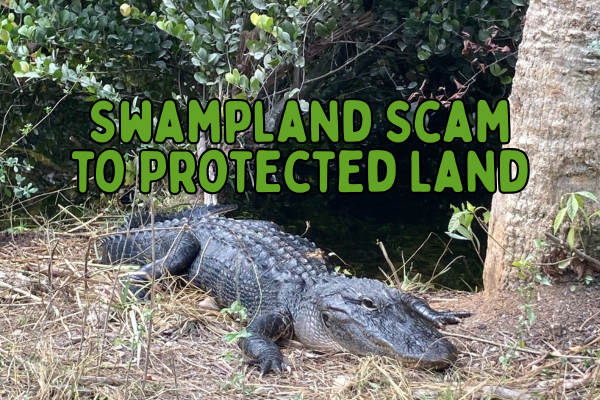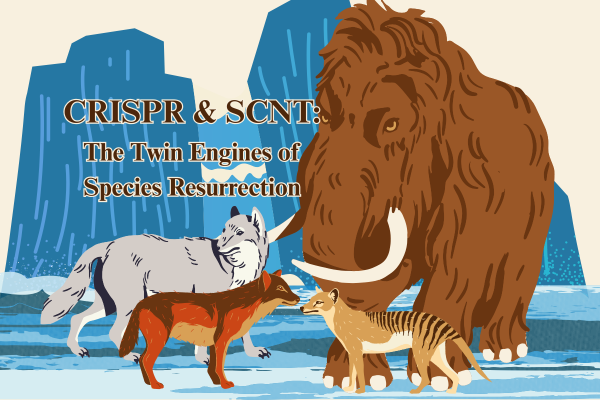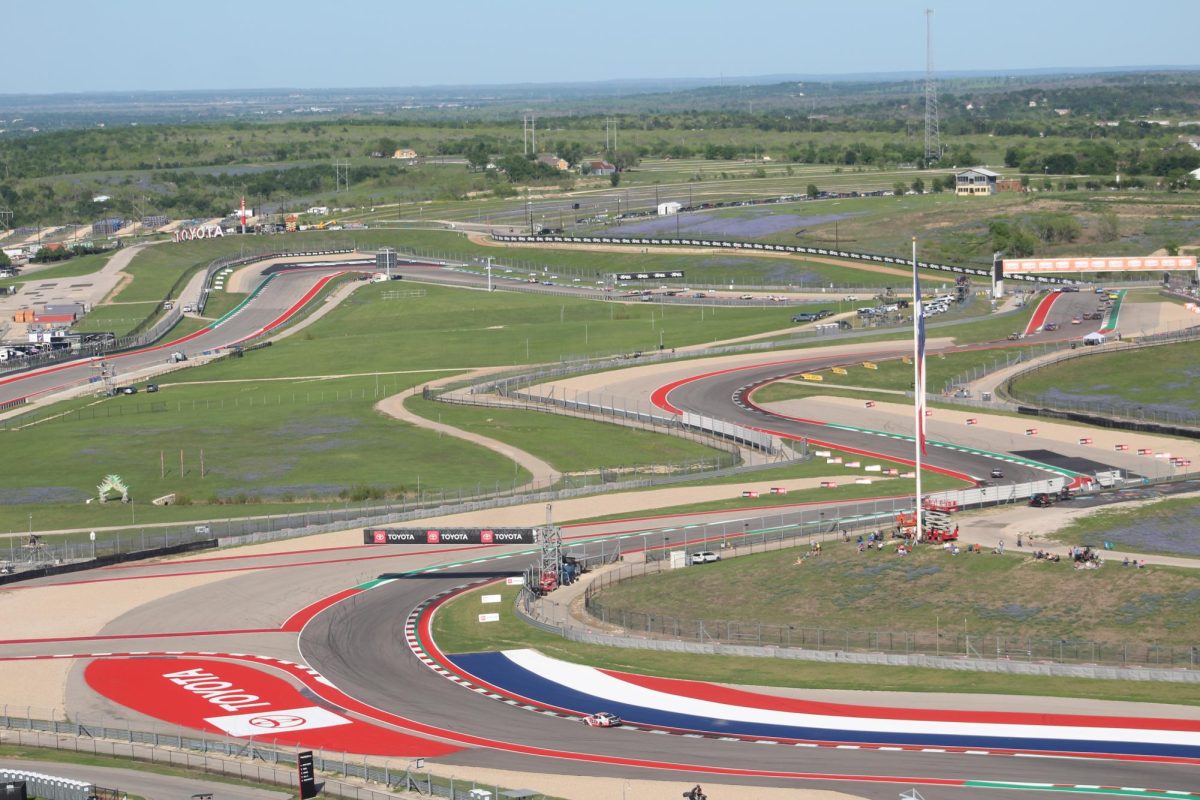Florida boasts an impressive 500+ bird species, many of which are unique to the state. From wading birds to high-flying raptors, each of these species has faced negative effects from human development. Habitat loss is a top concern as Florida’s population climbs, while the effects of a growing population, such as pesticide use and plastic pollution, encroach on crucial habitats. Climate change alters nesting grounds due to rising water levels, disrupting breeding success. Additionally, dangers like entanglement in fishing gear, collisions with structures and cars, and ingestion of lead from hunting or trash further endanger birds that are already struggling to survive in a rapidly changing environment.
Roseate Spoonbill
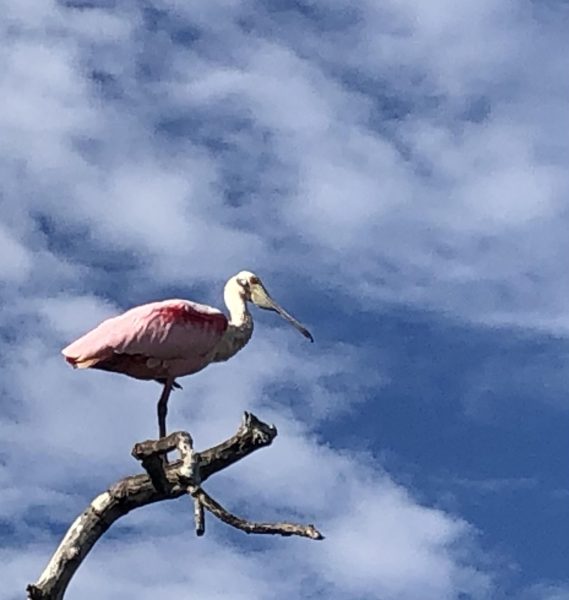
The Roseate Spoonbill is one of Florida’s most unique and well-known species. The birds are instantly recognizable, with their bright pink plumage and grey, spoon-shaped bills, which allow them to feed in shallow water by sweeping their heads from side to side and filtering small fish and crustaceans from the water. This is also the source of their vibrant color: the carotenoid pigments found in their food are absorbed into their feathers.
Their pink feathers were cause for their extensive hunting during the plume trade of the 1800s, in which many Floridian wading birds were targeted for their feathers. Nearing the beginning of the 1900s, the roseate spoonbill was nearly extinct, however, the Migratory Bird Treaty Act of 1918 outlawed the hunting of protected birds, allowing populations to recover. Today, the species’ main threats are habitat loss in the form of wetland degradation and changing water levels due to climate change.
Great Egret

The Great Egret is a tall wading bird known for its white plumage and slow, graceful movements. The birds are especially beautiful during the breeding season when males grow long plumes called aigrettes, visible during courtship. The skin between its eyes and beak (the lores) also turns a lime green.
The Great Egret played a key role in the plume trade, as the face of the early conservation movement and the National Audubon Society. Although their populations have drastically recovered, they now face threats due to habitat loss and pollution.
Green Heron
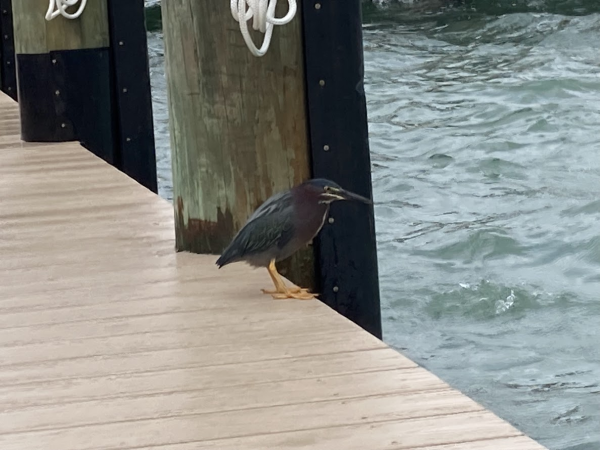
Small and dull-ly colored, the Green Heron is often overlooked. However, its unique hunting strategy sets it apart from other birds. Waiting motionless on the edge of the water, it sometimes drops small bits of twig or leaf onto the water’s surface, luring fish within reach (Don’t be fooled by their short necks; they’re actually quite long, and they tend to perch with their necks tucked in).
Populations are hard to monitor due to their secretive nesting habits; however, habitat loss seems to be their biggest threat, as wetlands are drained and overgrown vegetation is removed. Therefore, habitat preservation is essential to its survival.
Black-crowned Night Heron
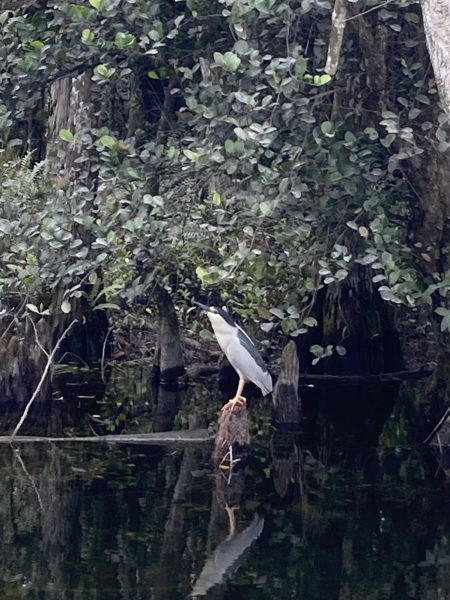
While not the most visually appealing, the Black-crowned Night Heron is perfectly adapted to nighttime hunting. It uses its nocturnal habitats to avoid competition from other birds, roosting during the day in dense vegetation, normally in large groups.
Although relatively common, this heron faces increasing threats from habitat loss, too, especially due to changes in water levels driven by climate change. Its fish-heavy diet also puts it at risk for accumulating pesticides and toxins, and like many coastal birds, it is vulnerable to plastic pollution along shorelines.
Least Tern

As the smallest North American tern, the Least Tern makes up for its small size with agility. While small, they are highly maneuverable fliers, catching fish near the surface of the water.
Traditionally nesting on sandy beaches, their colonies are susceptible to predators and human disturbances. They’ve adapted to nesting on flat roofs to mitigate these dangers; however, these urban environments present a threat as well: hot roofs can burn and stick to feet, and a lack of vegetation means no wind break. Gravel roofs have been tested successfully, potentially providing a safer option.
Classified as endangered in the 1980s, it was removed from the list in 2021 after methods like fencing off nesting sites and public education proved successful.
Brown Pelican
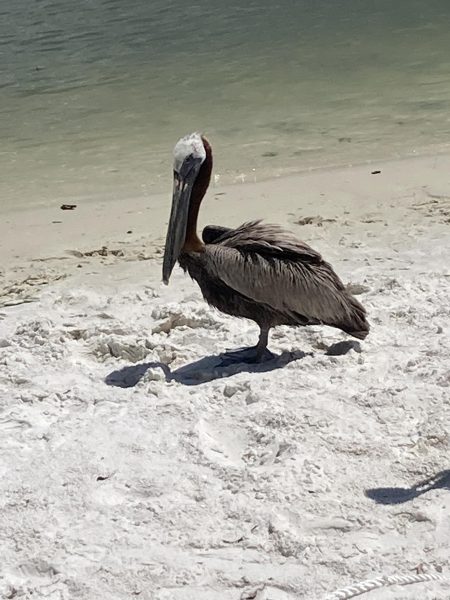
The Brown Pelican is a coastal celebrity, known for its massive bill and throat pouch. The pelican’s unique hunting behavior, locating fish from above before plunging headfirst to stun and scoop them up.
Yet another victim of the plume trade, the brown Pelican hasn’t had an easy life. While populations are relatively stable today, the pelican was also affected by the pesticide DDT in much the same way as the Bald Eagle. The species still faces the threats of oil spills, climate change, and careless fishing, often becoming entangled in fishing line or nets.
Bald Eagle
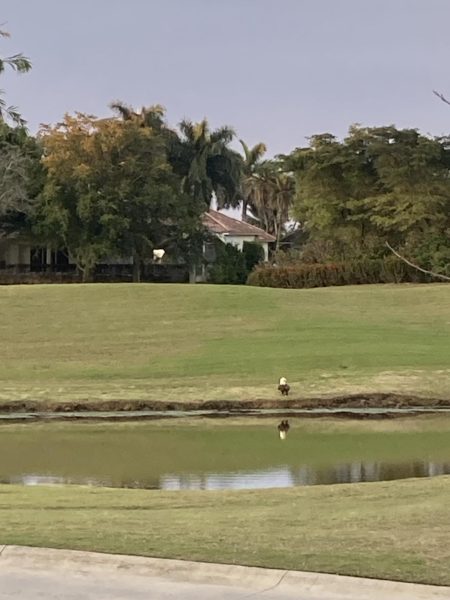
The Bald Eagle, arguably the most recognizable North American species, makes its home here on Marco Island. They exhibit unique mating and nesting behaviors, remaining with the same mate their entire lives, and adding to the sme nest every season. In fact, the largest nest was recorded in Florida: 9 feet in diameter and 20 feet deep. While feeding primarily on fish and small mammals, they are opportunistic scavengers, feeding on carrion and stealing food from other birds.
The Bald eagle represents a true conservation success story: once nearly extinct in the lower 48 states due to poisoning and the effects of DDT, the species has made a huge comeback thanks to conservation laws and pesticide bans. While their numbers are now stable, Bald Eagles still face the threat of lead poisoning, collisions, and habitat encroachment.
Swallow-tailed Kite
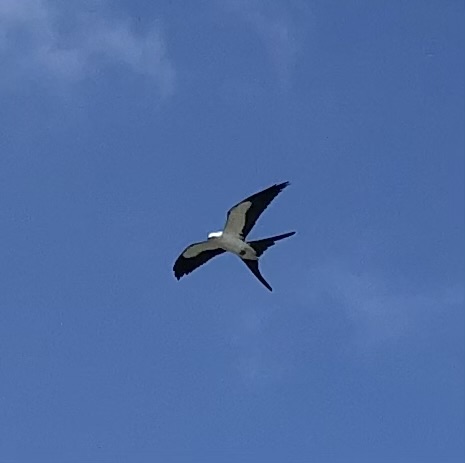
The Swallow-tailed Kite is easily identified due to its black-and-white coloring and deeply forked tail. Spending much of its life in the air, including hunting, it preys on insects, small vertebrates, and even invasive Iguanas. Unlike most other birds of prey, it will also eat fruit, especially when wintering in South America. Although once found throughout the southeast, the kite’s breeding range has shrunk due to habitat loss, most notably the clearing of large forests. Although populations have shown some increase due to conservation efforts such as reforestation, urban development and deforestation threaten breeding habitat.
Several organizations work to protect these birds, such as the Conservancy of Southwest Florida, Audubon Florida, and the Florida Fish and Wildlife Commission.




